By Nick Barter
Two birds with one stone?
When I think about what sets Clidive apart from many other clubs, I always come back to its dedication to adventurous diving and in particular the RIB expeditions we run every year. With five First Class Diver (FCD) candidates in 2019 it wasn’t hard to find volunteers to run three separate expeditions as Clidive celebrated its 50th anniversary in style.
I had already decided I wanted my FCD Expedition Plan to be based on a trip to Normandy, so I jumped at the chance to run our third 2019 RIB expedition when we decided to join the BSAC Normandy 75 expedition. The aim was to commemorate Operation Neptune and the D-Day landings of June 1944 that eventually led to the liberation of France and Western Europe from Nazi occupation. The fact it was also my 50th birthday during the expedition week was just a happy coincidence.
‘Two birds with one stone’ had been my initial thought when I took on the job of organising the expedition. Write the FCD plan then just run the trip. Easy. Suffice to say I was quickly disabused of that notion.
Firstly, I hadn’t banked on the fact that, with Clidive’s Ben Jaffey acting as a national organiser for Normandy 75, I’d actually end up getting involved in logistics for other clubs to be based in Ouistreham. I spent much of the two months before the expedition hiring enough compressors to supply Clidive, Ariel SAC, and Loughborough’s LUEC with air. Local supplies had ‘become unavailable’ – a situation that prompted the usually unflappable Ben to ponder ‘why we’d bothered liberating them in the first place’.
But I digress. After many phone calls and emails, we managed to hire five compressors for a nearly reasonable price and organise how we would get them to France and back. A special mention to Phil Page at this point who collected two of them from Tyneside SAC during a St Abbs trip, saving someone a long drive north and back.
Now every cloud has a silver lining, and in this case a whole bunch more people in BSAC are now compressor operators. Clidive’s non-stop London Region Coach, Gillian Bell, provided last-minute compressor training for Ariel SAC, while LUEC found a local trainer to help them out. Several Clidivers found themselves doing compressor theory on the ferry over to France, with practical training after diving on day one.
Secondly, a word to the wise for anybody considering FCD. The Expedition Plan you write for FCD is unlikely to be the expedition you actually run. In reality you are writing two plans. I’m sure my planning for Normandy was better because of the work I did for FCD, but I still found myself planning for two different expeditions. I most certainly didn’t get two birds with one stone.
Sticking our nose out
So to the expedition week itself. Two weeks, a long weekend in St Abbs, and 1,000 miles after leaving Clidive’s expedition to Scapa Flow in Orkney, Clidive Yellow arrived in Ouistreham, Normandy. It wasn’t all plain sailing as she arrived late and not attached to the vehicle she had set out with. Orange – our faithful transit warworkhorse – broke down an hour from our Normandy base, leaving Chris and Ben stranded on the hard shoulder with a boat.
We were all already running late, as we had suffered long delays at Dover on the way out. It was approaching 10pm on that first evening when Bart, Nick Jr and I arrived back at the AirBnB for a welcome beer and meal, having used my car to pick up Yellow and eventually launch her at Ouistreham Marina in the last of the evening light. Things could only get better!
(NB I had somehow managed to organise a trip with three Nicks out of 10 divers. Nick Junior is Nick Alibone. For the record, Nick Senior isn’t me, its Nick Harrison. I was simply the Supreme Leader which I thought thoroughly reasonable.)
France is a favourite expedition destination for Clidive for many reasons, not least good food. This trip was no different and with a fantastic built-in BBQ in the garden and a large choice of restaurants and patisseries five minutes’ walk away, we didn’t miss out. The little cafe next to our pontoon became a favourite lunch spot for ribs (the meaty kind) or croque monsieur, and an afternoon beer venue in the sun for those putting the boat to bed. It was also where we spent some time exchanging dive notes with the other clubs, and was all extremely civilised.
Clidive has run many RIB trips to the Mediterranean but this one was our first to Normandy, so a lot depended on my picking good sites, calculating slacks and deciphering lock times, as the marinas and harbours along this coast are virtually all protected by lock gates that open at various times around high water. Once we worked out that published lock-times were subject to change at short notice and required regular checking, it all seemed to go largely to plan.
The weather mostly played ball and we only lost one day to a quickly passing storm system. The upsides of this were: a) it was my birthday and the team made a great champagne breakfast; b) we had the chance to visit the poignant Mulberry Harbour and D-Day museum at Arromanches – a must if you are in the area; and c) there was plenty of time for more drinking and eating that afternoon and evening.
The diving itself proved excellent. We mostly dived wrecks in the eastern sector of the Baie de Seine near the British and Canadian landing beaches of Gold, Juno and Sword. The weather wasn’t fantastic on the first day and with shallow waters just outside Ouistreham port, there was certainly a steep swell as we performed the traditional Clidive ritual of ‘sticking our noses out’ to see what was what, despite weather forecasts and our senses suggesting we shouldn’t.
But nothing ventured is nothing gained and, as the sea bed deepened, the swell reduced to something approaching acceptable while remaining interesting enough to provide ‘experience’ to our boat handlers.
We didn’t have to go far, because we had identified two wrecks near Ouistreham in about 20m as back-up sites for such an eventuality. HMS Durban was a WWI-era light cruiser scuttled on 9th June 1944 to form part of the artificial breakwater codenamed ‘Gooseberry 5’, designed to protect the artificial harbour being built to the west. Ships scuttled for the Gooseberries were know as Corncobs, presumably to baffle ze Germans with our crazy sense of humour.
Given the weather and pre-trip tales of roaring tides and poor visibility, expectations were vastly exceeded by toasty warm water with ambient light all the way down and 10m visibility. Our introduction to ‘wrecks covered in life’ was in this case more tompot blennies per square meter than you normally see in a season.
In the afternoon we sampled the broken remains of LCG(L) 1062 – a Landing Craft Gun (Large) which was one of many types of vessel designed and built for D-Day. It was essentially a large artillery platform designed to provide fire support for the landings. I had hoped to dive it a few days later on the actual 75th anniversary of its sinking, 31st July 1944. But needs must, and it provided lots to explore to cap an unexpectedly good first day’s diving.
Day two: personal wrecks
My prime target for the trip was the Captain Class frigate HMS Lawford, which had been the HQ ship for Convoy J1 delivering the Canadian 7th Infantry to Juno beach on D-Day. The grandfather of our DO, Chris Wilson, had served on a destroyer under the command of HMS Lawford, which was lost on 8th June 1944 to an aerial guided bomb that caused the ship to split into two main pieces and sink rapidly with the loss of 37 lives.
With a weather window before the next day’s storm, I decided to go for it on the second day. Our first mark turned out to be the fabulous stern section of the wreck lying inverted with its twin prop shafts and rudder the standout features. Like all the wrecks we dived it was blanketed by shoals of bib, and patrolled by large wrasse and hunting bass, while the wreckage itself was full of lobster, crabs, congers and more feisty blennies than we could count. Scallops were plentiful in a coarse sand seabed that helped visibility. In places the stern was easy to penetrate through its exposed framework. With 10m visibility and excellent ambient light, this dive summed up what this area can deliver and for many was the favourite dive of the trip. [You can see Matt Brown’s video of the Lawford here].
Later that afternoon, in honour of our Polish contingent (Bart Wagrowksi), we dived ORP Dragon which was a WWI-era Royal Navy cruiser being operated by the Polish Navy in exile when it was hit by a human ‘neger’ torpedo with the loss of 26 lives, exactly one month after the sinking of HMS Lawford.
That evening Ben had to leave us due to work commitments but in two days he had racked up four great dives and the best visibility of the week to offset the hours of organisation he had put in for BSAC.
Magic moments & CCR lessons
Two days later we headed back out in hot sunny weather and flat calm seas. As we entered the latter part of the week we were building towards springs, which reduced the low water slack to almost nothing in places and, given the tide-dependent lock times, meant we were limited to one dive a day on an ever-shortening HW slack. Luckily my tidal calculations largely held up as we made the most of the situation with three great dives for the final three sunny days, despite the the storm having reduced visibility to a much darker 6-7m.
First up was HMS Magic – a minesweeper also lost to a neger torpedo. It was a really lovely dive, but one that gave me a couple of lessons in the use of CCRs. Throughout the week, Gillian and I were giving our CCRs their first ‘real’ outing, having qualified earlier in the year and practised our skills in quarries. Firstly, I didn’t notice I had lost Gillian for several minutes on the dive as I became entranced by sealife that doesn’t flinch an inch when you approach, because it isn’t deafened by bubbles. The difference in animal behaviour is remarkable and, hands up, I forgot about Gillian.
Secondly, when Gillian found me and we headed up, my DSMB ascent was terrible as I struggled with buoyancy and yo-yoed between 4 and 8m on the deco stop. Back on Yellow, I worked out the rookie CCR errors that had led to my troubles, but the damage was done, and I had to sit out the next day’s dive with sore ears.
It was no bad thing having a dedicated cox’n for the shortening slack windows. That day I searched for and (eventually) found the separated bow section of HMS Lawford. While the divers were down I pinged the middle debris field for a return visit sometime. On the last day, with fantastic weather and more calm seas, we headed on a 30-mile scenic drive up the coast, firstly to visit the Arromanches Mulberry Harbour from the sea, and then on further west to dive one of the most well-known wrecks in the area, SS Empire Broadsword.
This is a very large wreck with loads to explore. It was a large infantry transport, which hit two mines on 2nd July 1944 and slowly sank in 27m. Something had broken on Gillian’s CCR and so it was her turn to be dedicated cox’n. I buddied up with Matt Brown and quickly learned another CCR lesson. That sound in your ear that you assume is your open circuit dive buddy’s relaxed regular breathing following along behind you isn’t your dive buddy. Its your oxygen solenoid. Sorry Matt, it could have been such a long and lovely dive if I hadn’t lost you following that lobster!
That only left boat recovery, cleaning and packing up, a last meal out and final preparations for our re-organised return journeys. Nick Sr and Elaine booked a limping and leaking Orange van onto the Ouistreham-Portsmouth ferry to be collected at the other end by an AA truck, which took them all back to Hackney. I hooked up Yellow to my car, and Chris and I headed for the Calais-Dover ferry. The final swerve-ball of the trip was the trailer’s light-board, which, though tested the night before, refused to work in the morning, despite our best efforts with WD40. With all the spares in Orange, which was now mid-Channel, we eventually set off with non-functioning trailer lights, successfully managing to avoid inquisitive law enforcement officers for the 250-mile drive.
Running an expedition is a constant challenge, but the rewards are memories of adventure that last a lifetime. We only scratched the surface of the diving potential in this region, but we have gained valuable experience of the diving and the area that will enable us to do even more when we return. And that probably is the essence of a good expedition – it leaves you wanting more. I will lead or help lead a trip back to Normandy some time hopefully soon. But not yet as 2020 already has a full set of fantastic looking expeditions for you all to sign up to, or even better help organise. I really think they are the heartbeat of Clidive. If you haven’t been on one, you should.

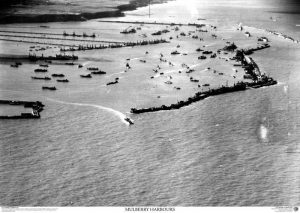
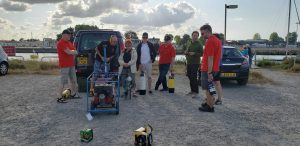
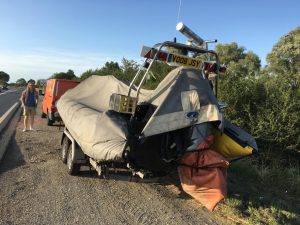
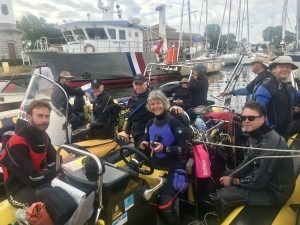
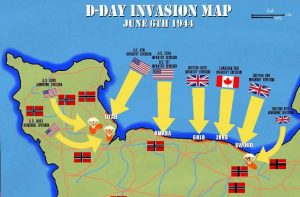
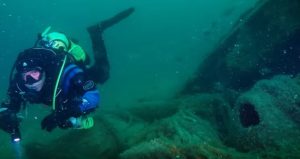
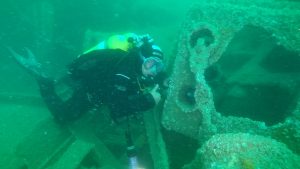
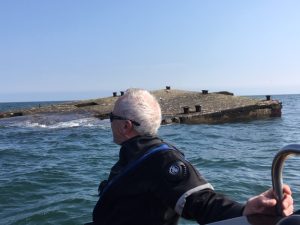
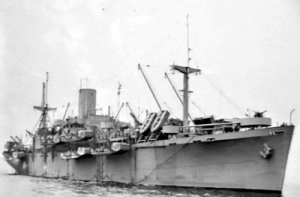

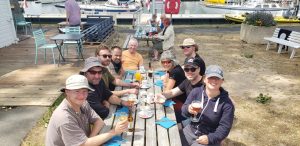
 We are an LGBTQIA+ friendly club
We are an LGBTQIA+ friendly club